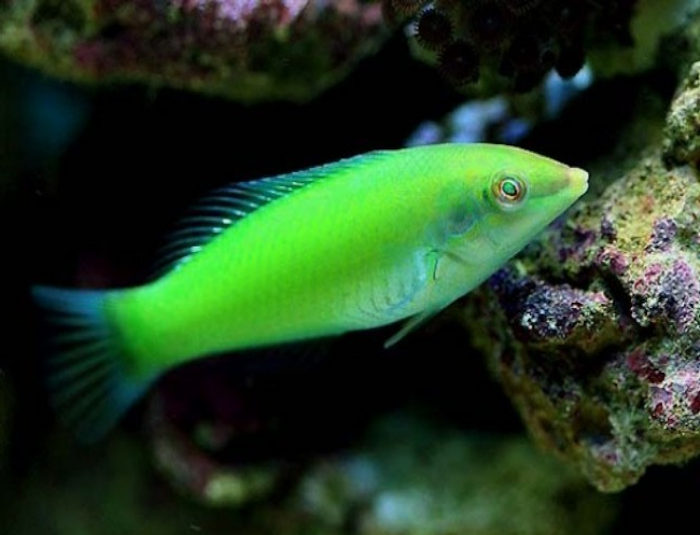Green Coris Wrasse
Green Coris Wrasse (Halichoeres chloropterus)
The Green Wrasse, also known as the Pastel Green Wrasse, is a popular choice among saltwater aquarium enthusiasts due to its striking appearance and active behavior. This vibrant fish is notable for its ability to protect corals and clams by consuming pests like fireworms, flatworms, and pyramidellid snails, as well as feather dusters and tubeworms.
For optimal care, a **minimum tank size of 125 gallons** is recommended, equipped with a thick sandy substrate for hiding. The aquarium should feature plenty of live rock to provide food sources and shelter. Because the Green Wrasse is known for jumping, a secure lid is essential. When adding a pair, introduce the female first.
Native to the Indo-Pacific region, including the Red Sea, Indian Ocean, and Pacific Ocean, the Green Wrasse is characterized by its vibrant green body, which deepens toward the head, and a yellow tail. Juveniles tend to have more muted colors with intricate patterns.
In the wild, these wrasses inhabit coral reefs and lagoons, darting in and out of crevices. They are considered reef-safe, as they generally do not harm corals or sessile invertebrates. However, caution should be exercised with small crustaceans and ornamental shrimp, as they may be seen as potential prey.
Green Wrasses typically grow to **6-8 inches**, making them suitable for medium to large aquariums. With proper care, they can live for **5 to 7 years** in captivity.
As carnivores, Green Wrasses thrive on a diet of small crustaceans, worms, and various invertebrates. In captivity, they readily accept high-quality frozen and live foods, including brine shrimp, mysis shrimp, and finely chopped seafood.
While some Green Wrasses are aquacultured, wild-caught specimens are more common in the aquarium trade. Availability can vary based on location and season, so it’s important to source fish from reputable suppliers.
There are no significant differences in coloration or physical characteristics between male and female Green Wrasses, making sexual dimorphism hard to identify.
Juvenile Green Wrasses exhibit muted colors and intricate patterns that evolve into the vibrant green hues seen in adults as they mature.
These wrasses are active and inquisitive, constantly exploring their environment. While generally peaceful, they may display territorial behavior towards other wrasses or similar species.
